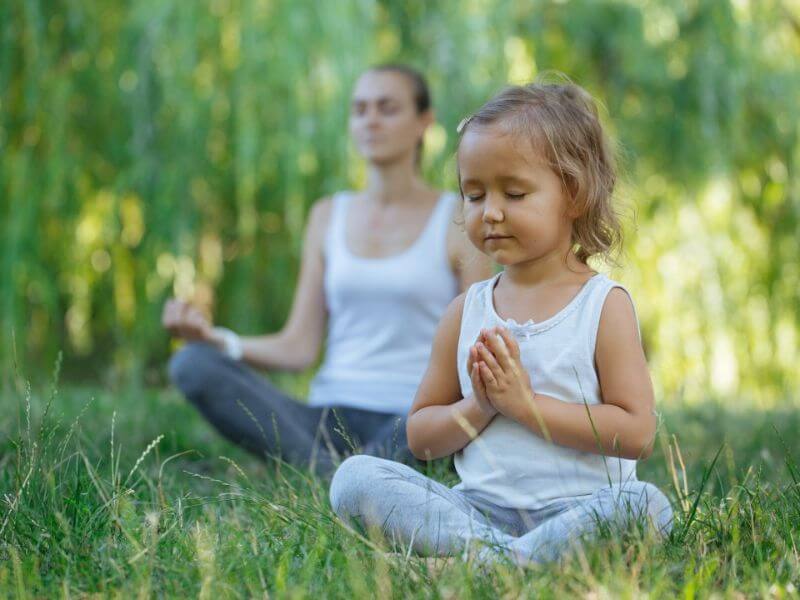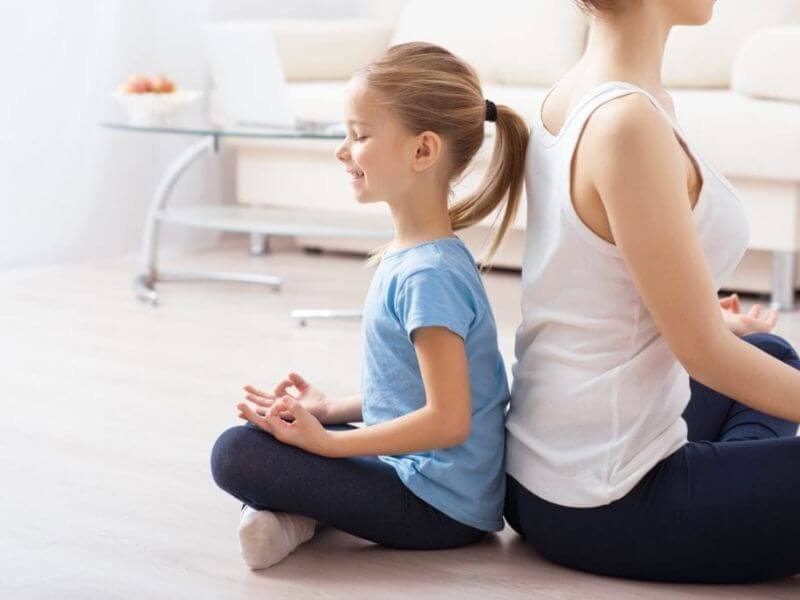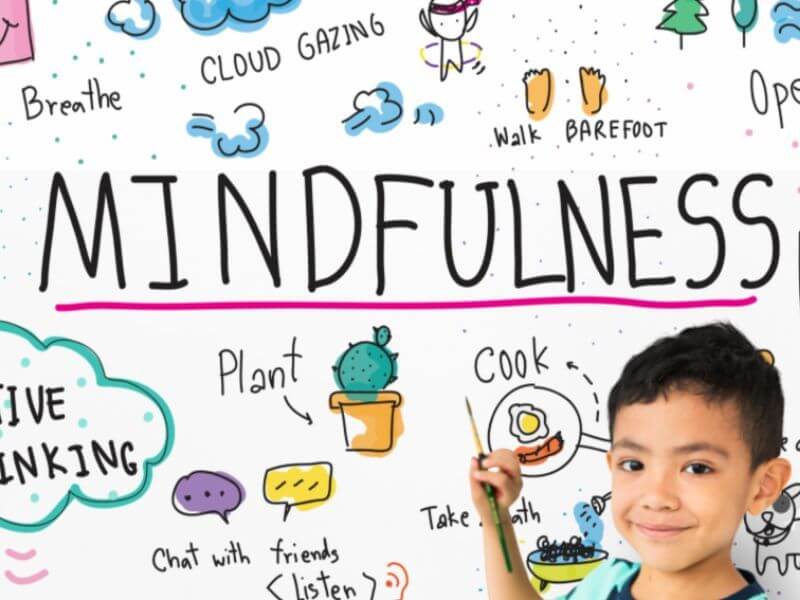What is Mindfulness for Kids? Benefits and Simple Practices
Mindfulness is the practice of being fully present and aware of the moment. It offers profound benefits by fostering emotion regulation, improving attention, and strengthening resilience. The growing interest in teaching mindfulness can nurture kids’ academic growth, well-being, and emotional intelligence.
What is Mindfulness for Kids?
Mindfulness encourages kids to pay attention to their feelings, thoughts, or anything happening at the moment without judging. By teaching mindfulness to children, we empower them with essential tools to recognize and deal with their emotions, including stress and unpleasant or challenging feelings.
Learning mindfulness unlocks children with the potential to navigate their demands and discover their inner peace. Therefore, they understand why they are experiencing that situation and can stop reasonably.
7 Benefits of Mindfulness for Children
Here are 7 long-term benefits of nurturing mindfulness for kids and how it can strengthen their happier and more balanced future.
Regulating Emotions
Mindfulness provokes children’s concentration and helps them recognize and balance their emotions, thoughts, and behavior. By being more self-aware of their feelings, they can effectively handle depression, anxiety, and stress.
Sharpening Focus
Mindfulness practices allow students to stay focused on a single task ahead and reduce distractions around them. Achieving the best state of mind can lead to better engagement and productivity and inspire them to shape their future objectives.
Reducing Stress
Schoolwork, peer pressure, and parents’ high expectations are invisible burdens that students are experiencing now. Mindfulness exercises can lower the levels of stress and anxiety.
Boosting Self-Awareness
As a kid, understanding deeply their feelings, thoughts, and behaviors can encourage self-acceptance and empathy toward others. It also reduces the risk of conflict and improves their relationships with peers, parents, and siblings.
Improving Sleep
Applying mindfulness practices such as meditation and deep breaths before sleep can unwind your mind, help you fall asleep easily, and have a restful night’s sleep.

Building Resilience
Resilience allows children to thrive in an advertised life by staying calm and being present. Practicing can help children bounce back from challenges and hardships effectively.
Enhancing Wellbeing
Boosting the capacity of mindfulness can lay the groundwork for owning a satisfied life. It makes staying engaged in your goals easier and fosters the ability to cope with obstacles in your life.
Activities to Practice Mindfulness for Kids
Following are helpful mindfulness activities for kids, providing excellent opportunities to equip lifetime skills.
Mindfulness Meditation
Mindfulness meditation brings many benefits to emotional bonding and mental growth. Starting from a few minutes at the beginning, gradually working toward 30-minute practice can stimulate cognitive performance and cultivate a sense of calm.

Mindful Eating
Mindful eating is being cognitive about food, feelings, hunger, and other physical cues that kids are experiencing. Knowing how to eat mindfully helps them enjoy their meal and lead satisfied lives.
Children can apply mindful eating tips by slowing down their eating speed, understanding hunger signals, taking care of the kitchen, and considering their intake.
Nature Walks
Nature walks are practical ways for kids to explore nature, providing hands-on experience that boosts curiosity and mindfulness. Besides, they can deeply connect with and observe the world around them. Nature walks encourage sensory cognition and emotional development through colors, smell, sound, and texture.
Practice Mindful Breathing
Mindful breathing is an effective mindfulness activity for both kids and adults. It is also one of the simplest ways to train mindfulness for your children.

This meditation practice can start with a 1-2 minute season, then increase to 5 minutes and longer, focusing on your breath as it flows in and out. Kids can try it before bed to make sure that they have a perfect bedtime.
Body Scan for Kids
Body scan is a wonderful mindfulness technique that helps children develop an awareness of the connection between their body and mind.
Teachers can guide kids by choosing a comfortable place and begin to scan from the toes upward to the head or vice versa. After scanning, guide the kids to relax and stay tuned to the present.
Practice Mindful Journaling
Teens are in a formative period when they begin to navigate their emotions and identity. Therefore, journaling will provide a safe and personal space for their exploration.

They can write down all their thoughts, stress, and feelings in the present moment. They can also include things they feel thankful to transfer from negative to positive attention, relieve anxiety, and enhance their happiness.
Practice Gratitude Exercise
Being grateful is an impactful way to raise awareness of the present and appreciate the positive aspects of life. It also fosters a more profound understanding of others, enhances mindfulness, and respects their influence on your life.
Students can practice by writing down things they are grateful for in the day, writing letters, expressing their gratitude to the ones they appreciate, or even sharing it with their loved ones during mealtime at home.
Mindful Coloring
Mindful coloring requires kids to concentrate on how they choose and adopt colors to draw their attention to the current moment. This activity is similar to meditation as it takes you back to what you are doing.
The method acts as leverage to train your mind to be focused on what is happening. Besides, repetition allows children to become more relaxed and create a sense of calm by focusing fully on the act of coloring.
Counting Heartbeats
Kids can tune into their bodies by applying the most effective and grounding practice called counting heartbeat. By focusing on the natural rhythm of the body, they can perceive their internal feelings and calm their mind.

This activity doesn’t require any materials; kids can choose a quiet place to minimize outside distractions, then count each heartbeat silently and take notice of how they feel.
Mindful Playtime
Playing is when kids pay all their attention to engage in creative activities. Therefore, teaching mindfulness through playtime encourages whole awareness of the presence, heightens their emotional regulation, and strengthens the bonding between children and caregivers.
There are various activities that we can design such as playing musical instruments, reading stories, and engaging in sensory games,… to form mindfulness and support kids’ cognitive development.
Mindfulness at ISHCMC: Nurturing Well-Being and Happiness!
Mindfulness helps children concentrate on the present moment by utilizing various activities. It plays a crucial role in encouraging awareness, emotions, and thoughts. Integrating it into daily life can enhance kids’ resilience and give them a better sense of well-being.
Mindfulness is a big advantage students will accumulate when coming to ISHCMC. At schools, students have a great opportunity to practice mindfulness lessons, from meditation to mindful drawing, led by professional advisors and teachers. From that, they can become relaxed and regulate their emotions better.
Give your children an innovative and supportive learning environment to prioritize academic growth and well-being. If you are concerned about it, contact us today to embark on the journey of shaping kids’ bright future.






